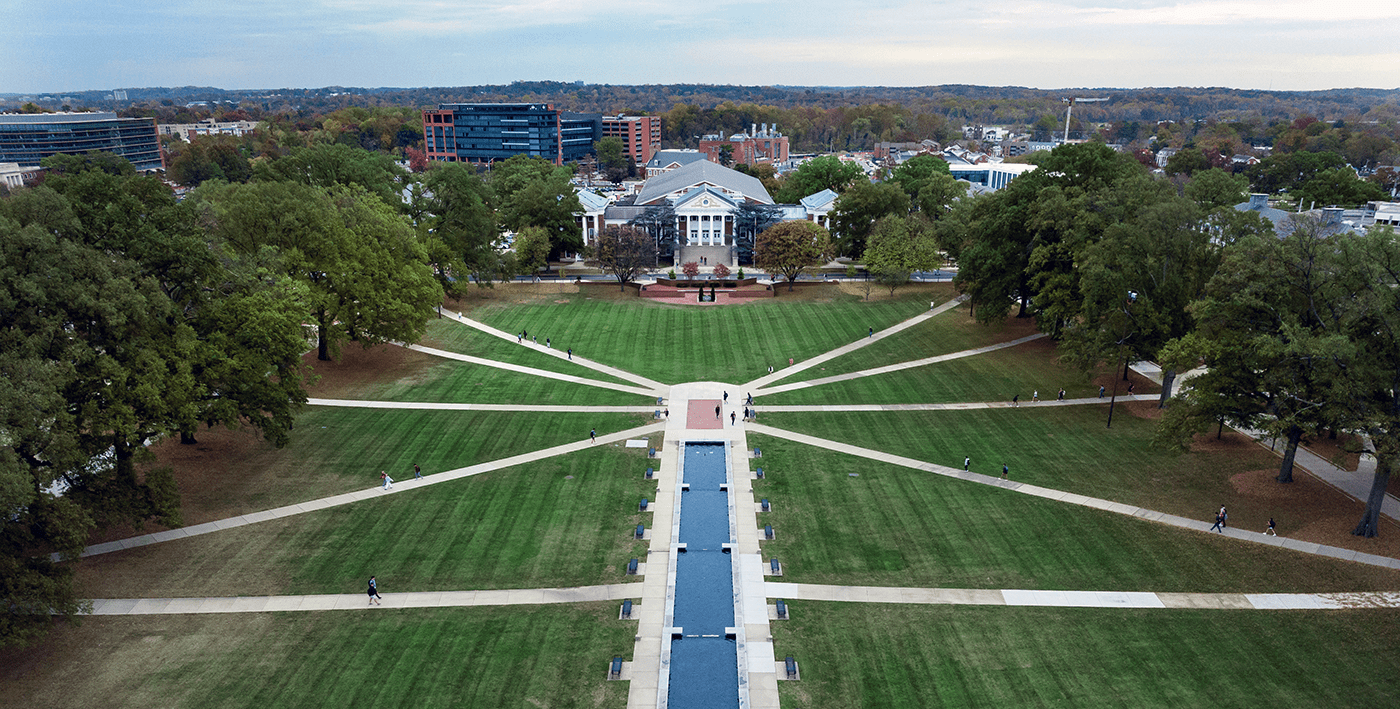
On a typical day, Facilities Management’s Space Management team is juggling space change requests, analyzing space-use data, and collaborating with campus partners to find efficient, data-informed solutions for evolving space issues. Part puzzle, part problem-solving, university space management is about making sure the rooms and buildings on campus, like classrooms, offices, study spaces, and labs, are being used in the best way possible.
“Think of it like managing a giant, ever-evolving library of rooms, making sure every space is accounted for, up to date, and aligned with the university’s goals,” said Fran Becker, Assistant Director of Facilities Asset Inventory, who leads FM’s space management efforts and helps campus partners make the most of every space. She leads a small but mighty team of six. "It’s about aligning existing space with evolving campus needs—ensuring every square foot is accurately tracked, strategically assigned, and used as efficiently as possible to support the university’s mission."
A Behind-the-Scenes Balancing Act
Most people on campus don’t think twice about the spaces they use—until they can’t find one. Space is a limited resource. Whether it’s a full classroom, an overbooked conference room, or a department outgrowing its offices. The UMD campus is no exception.
The Space Management team works to balance the diverse needs of students, faculty, and staff, ensuring every room, office, and building is inventoried, up to date, and aligned with the university’s space guideline allowances. With nearly 14 million square feet of space and over 53,000 rooms on the College Park campus alone, it’s a logistical challenge of epic proportions. “Managing space requires careful consideration of both space allowances and stakeholder needs,” explains Fran. “That’s why we rely on state guidelines and university standards—to make decisions that are both fair and efficient for everyone on campus.”
Sometimes, that means making difficult choices. “We had to reallocate space from a long-standing student support program to a rapidly growing academic unit in need of faculty offices,” she recalls. “It was a tough decision, but it allowed for more effective use of campus space while still supporting student access.”
Behind the Numbers: How FM Keeps Space Data Accurate
Maintaining accurate space data is one of the biggest challenges the space management team faces. As student enrollment fluctuates, academic programs shift, and departments evolve, space use changes constantly, sometimes without formal notice. Keeping up requires more than just digital tools. The team uses a combination of data-driven decision-making and on-the-ground validation to track space utilization and prevent valuable areas from being overlooked.
While FM’s new Integrated Work Management System provides a centralized source of information, accuracy still depends on direct input from the field. “When we receive notification of a space change, each space is surveyed by staff,” said Fran, who collaborates with teams across campus to keep records up to date. After reviewing, those changes are entered into the master database, ensuring the university has a clear, current picture of how every square foot is used.
Each summer, planning assistants walk the campus to verify and document space data firsthand. They visit buildings room by room to confirm room numbers, functions, and physical details, ensuring the university’s space inventory remains accurate and up-to-date. Their work is essential for preparing the annual state space report and supports informed planning decisions across campus.
Supporting Success, One Space at a Time
For students, faculty, and staff, space management can feel like an invisible process—until it’s not. But the work of this FM team impacts every room on campus—classrooms, offices, labs, auditoriums, and meeting spaces. A job well done goes without notice. People just walk into a room, sit down, and get to work. And that’s exactly how it should be.
“I’m motivated by the impact our work has on the campus experience,” Fran says.” Knowing that accurate space management directly supports students, research, and the campus community is very rewarding.”
For now, it’s back to the puzzle—balancing space, people, and priorities to keep the university running. And though no two days look the same, one thing is certain: behind every open classroom door, every filled seat in a lecture hall, and every meeting that starts on time, the Space Management team is working to make it happen.
Need to request a space change for your department? Complete the Space Use Change Form.
